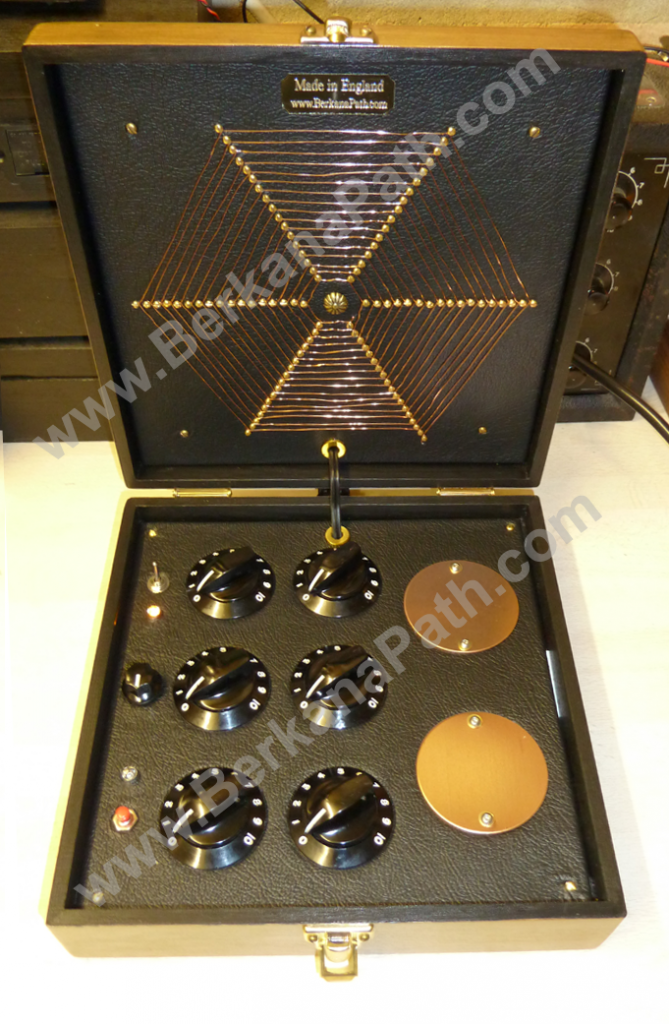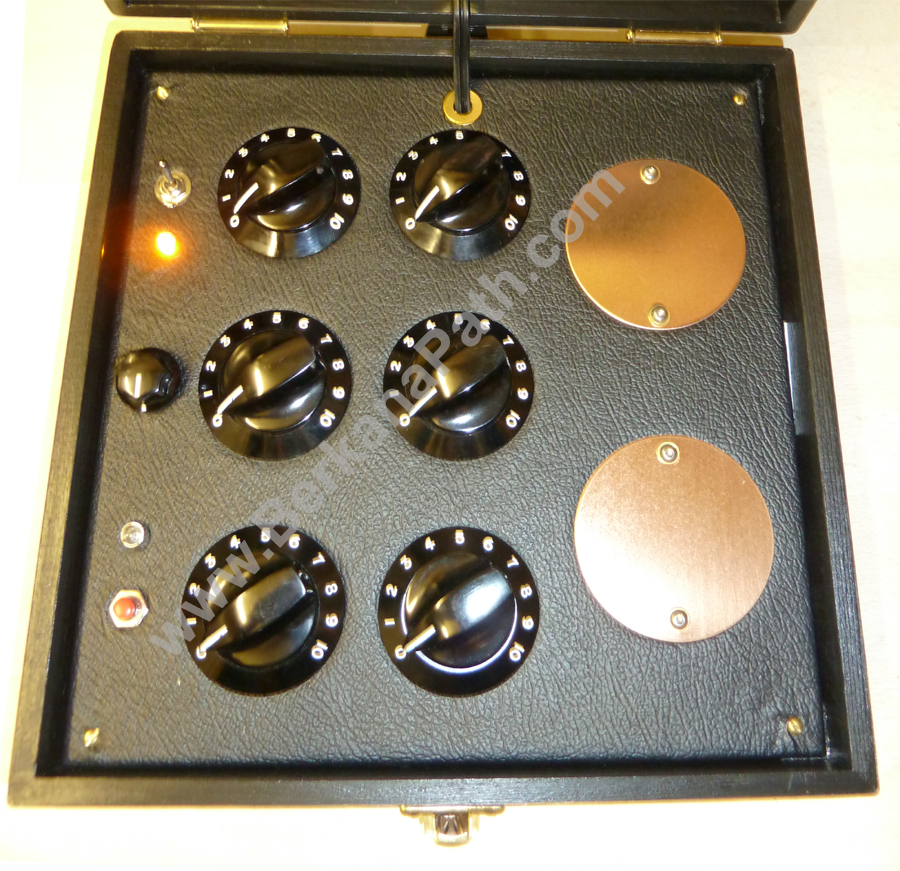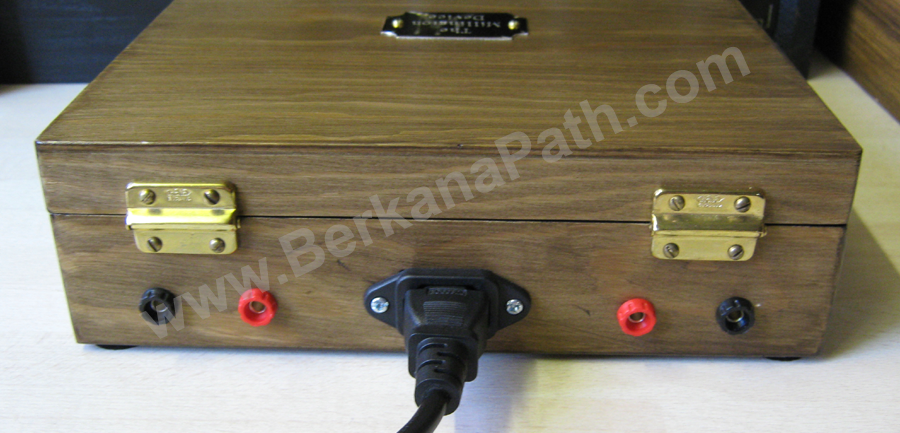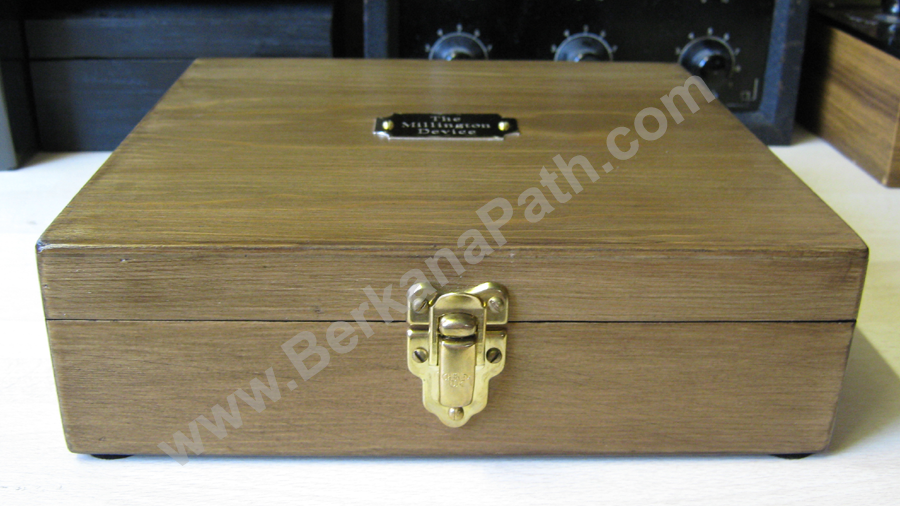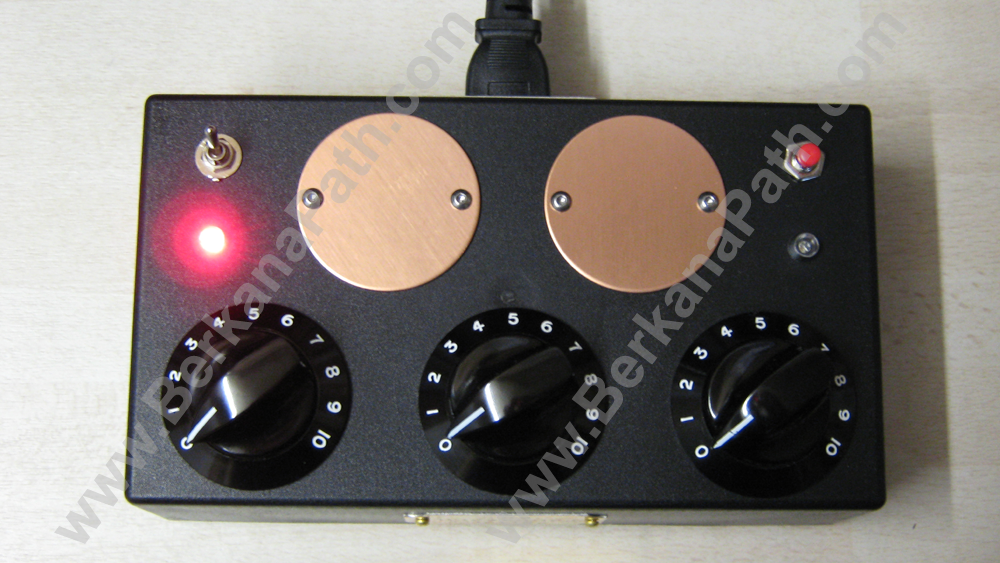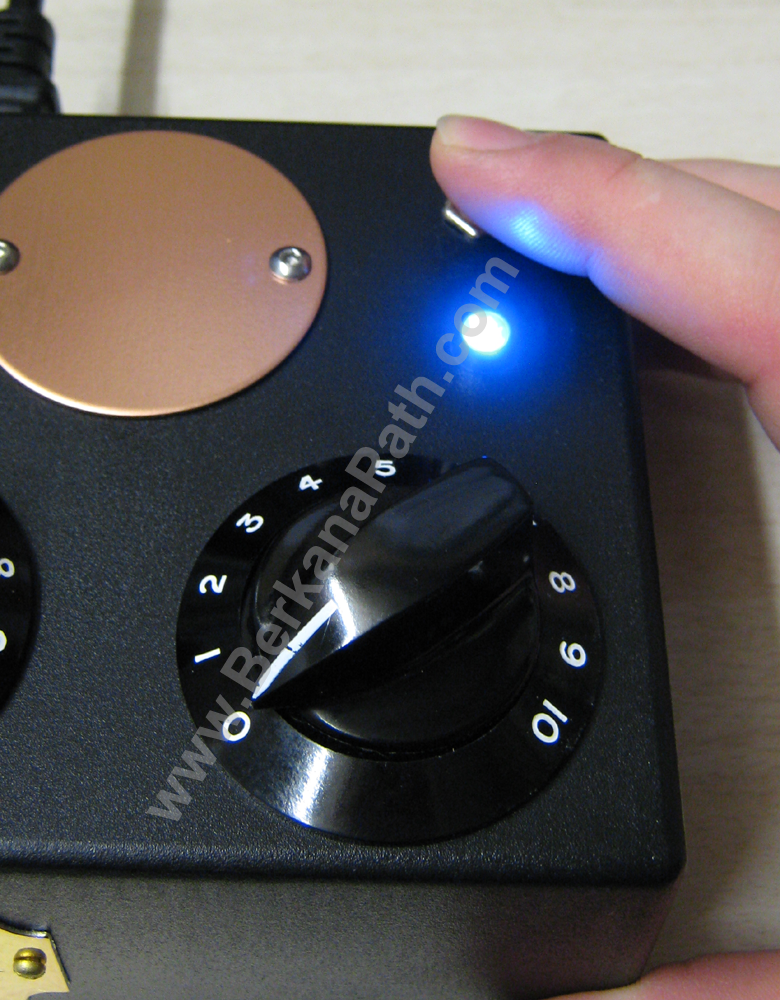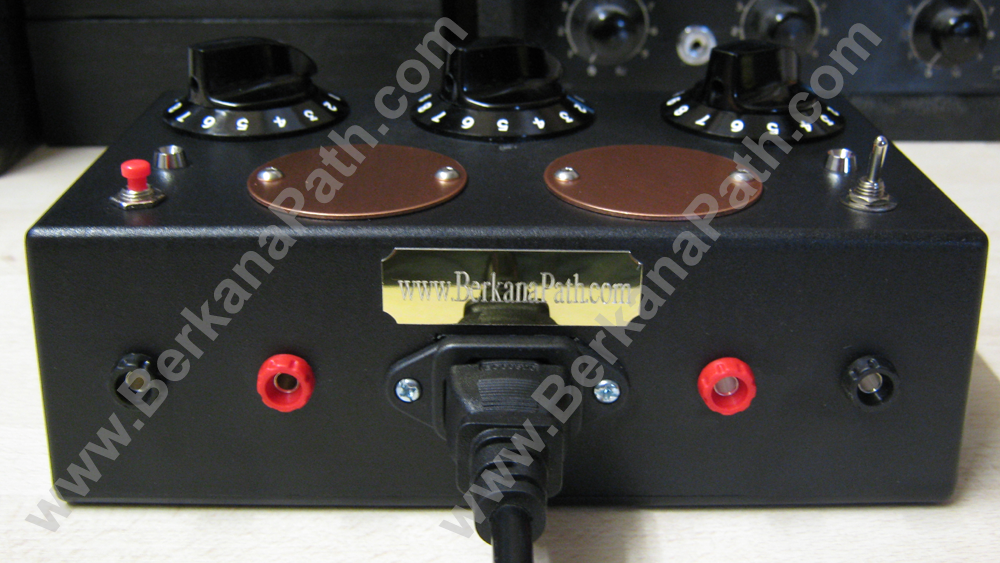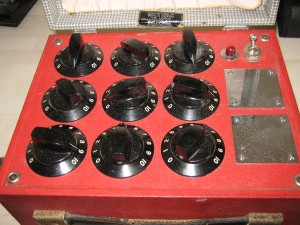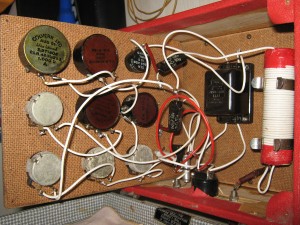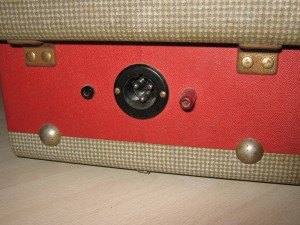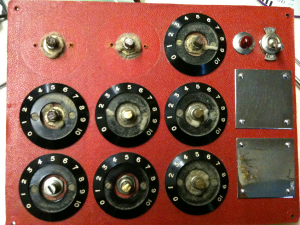Radionic Instrument: The Millington Device
I developed this Instrument as a commission. The brief was that a radionics machine was needed, which could be used with Rife frequencies from an audio source, In this case it was Frex software. I got to play around with a few new concepts, and add a loop antenna in the lid. A few of you who follow my forum posts may remember I developed a twin antenna system for the Moraie. This is the only time a loop antenna has been fully operational in an instrument of my own making, and the results reported by Mr. Millington, the machine’s namesake, have been extremely positive.
There are a few variations to the circuit compared to the Wickenden device. These include a different form of coil winding, in relation to the core crystals, a different amplifier circuit operating in a lower frequency spectrum, and a variation in the radionic output supply stage.
The control panel consists of six Bakelite base 10 dials, another Bakelite intensity adjustment dial located between the top power switch and indicator, and the bottom push button clearing switch and indicator. On the far right of the control panel we have the copper Input Plate to the top, and the Ouput Plate below.
The back of the instrument has been designed to allow for peripheral attachments. The right hand sockets are the inputs, and the left hand the outputs. It’s the reverse of regular audio socket positioning, but it didn’t make radionic sense to do it any other way. I made a simple adapter to allow for a 3.5mm cable connector on the input (not pictured). The output is load protected by a small resistor allowing the potential to feed a patient directly with rife impregnated radionic signals via a couple of low-voltage electrodes. The layout is very similar in style to the Wickenden device, in fact, the Wickendedn instrument was built with the knowledge I gained from the construction of this device.
I am pleased with how this instrument turned out. I take a lot of pride in constructing these living machines with dedication and meticulous attention to detail. I view the construction of these as an art form and ritual, and the powerful results, and reality manipulation they are capable of speak for themselves.
“We are the real wandmakers” – Sorynzar

